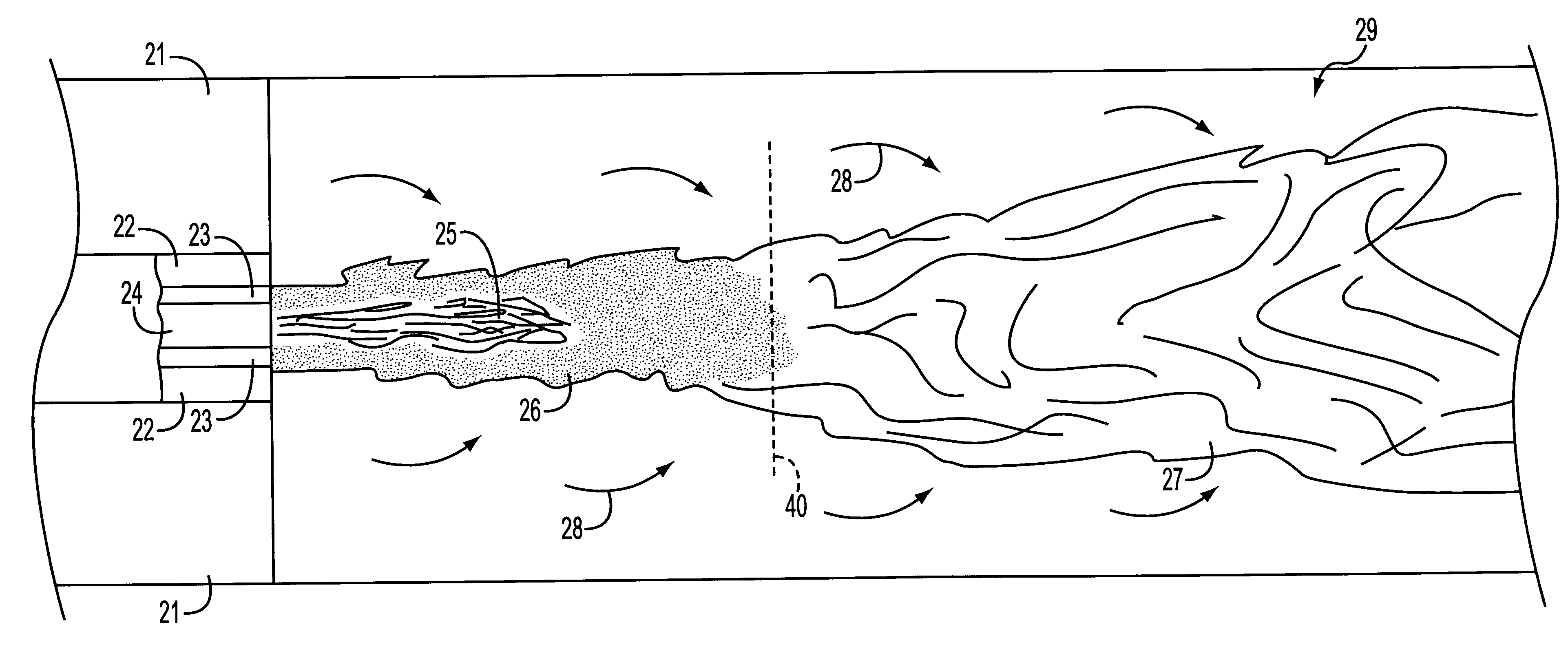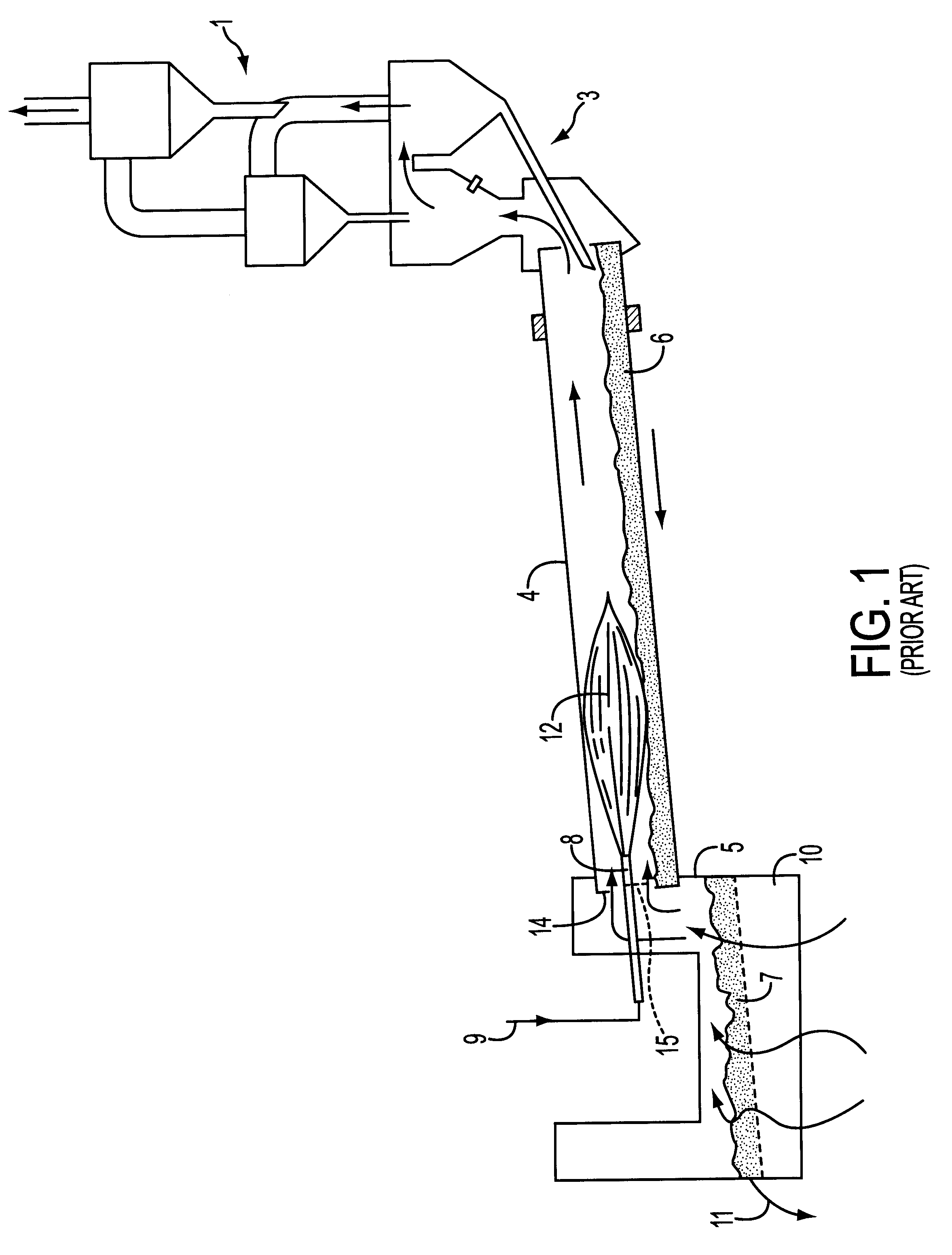Combustion process applicable to the manufacture of cement
- Summary
- Abstract
- Description
- Claims
- Application Information
AI Technical Summary
Benefits of technology
Problems solved by technology
Method used
Image
Examples
Embodiment Construction
In FIG. 1, the green material coming from zone 1 is sent into the precalcining zone 3 (or, 10 according to a certain embodiment, a Lepol-type exchanger) in which the temperature of the green material progressively rises with the countercurrent of hot gases flowing from the left to the right in the figure.
FIG. 2 shows a detailed view of the flame (12) shown in FIG. 1. In this figure, the same elements as those in the other figures bear the same reference numbers. The flame extends over a great length of the rotary kiln (4) and the beginning of the combustion starts effectively at a certain distance from the end of the burner (8), the noncombustion zone visible between the end of the burner and the beginning of the flame being shown by the zone (13). The primary air and the main fuel are injected into the burner, while the secondary air is injected along the sides (according to the prior art). The primary air is injected at a temperature of approximately 100.degree. C. the secondary a...
PUM
| Property | Measurement | Unit |
|---|---|---|
| Fraction | aaaaa | aaaaa |
| Fraction | aaaaa | aaaaa |
| Fraction | aaaaa | aaaaa |
Abstract
Description
Claims
Application Information
 Login to View More
Login to View More - R&D
- Intellectual Property
- Life Sciences
- Materials
- Tech Scout
- Unparalleled Data Quality
- Higher Quality Content
- 60% Fewer Hallucinations
Browse by: Latest US Patents, China's latest patents, Technical Efficacy Thesaurus, Application Domain, Technology Topic, Popular Technical Reports.
© 2025 PatSnap. All rights reserved.Legal|Privacy policy|Modern Slavery Act Transparency Statement|Sitemap|About US| Contact US: help@patsnap.com



